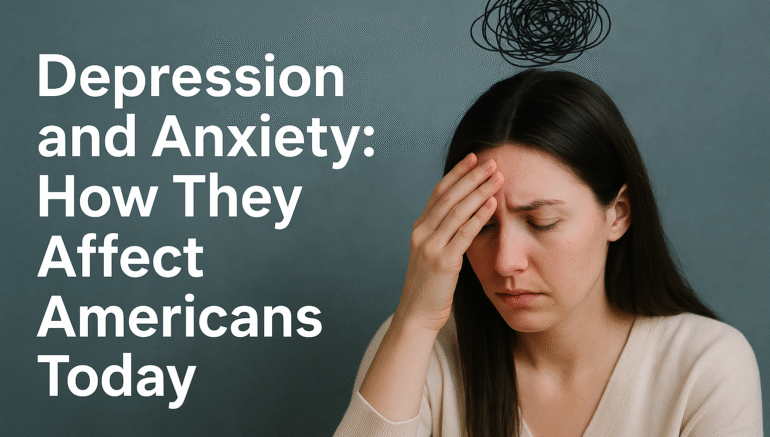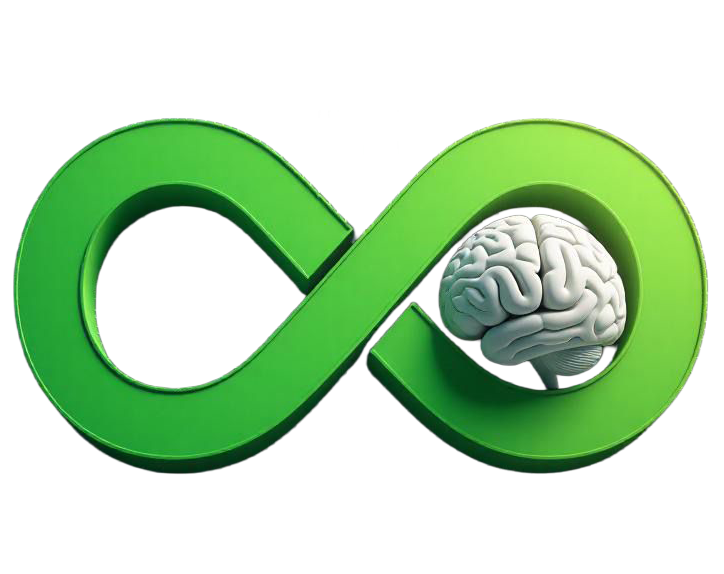
February 9, 2023
Mental health is among the most important public health concerns in the United States, and the first in the list of depression and anxiety. Although these conditions are both biological and social, it is well entrenched in the psychological processes through which people think, feel, and act. In these disorders, millions of American people are subjected to disrupted emotional control, negative thoughts, and cognitive distortions.
The psychological dimension of depression and anxiety will be investigated to help understand further how these two conditions influence our everyday life, the decision-making process and relationships that are impacted by these conditions, since these conditions are not just a medical diagnosis but a human experience, and thus should be approached holistically and empathetically.
Mental Depression
Depression is a medical condition as well as a state of mind that is characterized by abnormal perception and maladaptive thinking processes.
Cognitive Effects
- Negative Thinking Patterns: Depressed individuals tend to think in black and white, and thus, in their thinking, they are considered failures because they do not measure up to perfection.
- Hopelessness: The cycle of low motivation is oftentimes driven by a belief that nothing will ever get better.
- Lack of Good Concentration: Inability to concentrate or decide on matters may impact work, studies, and other day-to-day chores.
Emotional and Behavioral Effects.
- Quitting social activities as a result of being worthless.
- Loss of interest in hobbies is an indication of a lesser pleasure response in the brain.
- Increased self-criticism, which reinforces guilt and shame.
Psychological Roots
- Learned helplessness: It is a psychological theory by Martin Seligman describing how the experience of failure or trauma can teach people to give up.
- Attachment problems: Childhood experience can influence the emotional regulation of an individual in adulthood.
Psychological Aspects of Anxiety
Anxiety disorders are psychological in their essence as well, affecting the way thought is processed and forming fear cycles.
Cognitive Effects
- Over worrying: The mind is always in trouble, looking forward to danger even in minor cases or things that are not perceived.
- Catastrophic Thinking: People have the tendency to think that things are the worst and therefore add to fear.
- Attention Bias: The brain is hyper-focused on danger, and neutral situations become dangerous.
Behavioral and Emotional Implications.
- Excitability and nervousness due to excess stimulation of the nervous system.
- Avoidance, i.e., avoid social activities or chances because of fear of embarrassing or failing.
- Panic attacks are a combination of physical and severe mental distress.
Psychological Roots
- Classical conditioning: Anxiety can be attained by repeatedly associating neutral experiences with fear (e.g., a car crash causing fear of driving).
- Cognitive-behavioral models: Anxiety is maintained with avoidance, where individuals are not able to learn to forget fears.

The Overlap: Depression and Anxiety.
Psychologically, the two conditions are depression and anxiety, which are related. Both are characterized by cognitive distortions, which are negative cycles of thinking that increase stress and lower the ability to cope.
- Anxiety makes people hyper-aware, and depression makes people numb- they place people in the middle ground between thinking a lot and doing nothing.
- The two conditions decrease self-efficacy, the conviction that an individual can manage the challenges of life.
- Emotional dysregulation gets acute, and this is shown in things like personal relationships and performance at the workplace.
Quick Psychological Snapshot of Depression vs. Anxiety
| Aspect | Depression | Anxiety |
| Core Thought Pattern | “Nothing will ever get better.” | “Something bad is about to happen.” |
| Cognitive Distortion | Hopelessness, black-and-white thinking | Catastrophic thinking, hyper-alertness |
| Emotional Impact | Numbness, guilt, low motivation | Restlessness, fear, panic |
| Behavioral Effect | Social withdrawal, loss of interest | Avoidance, nervous habits |
| Psychological Root | Learned helplessness, attachment issues | Conditioning, avoidance cycles |
| Best Therapy Fit | CBT, mindfulness, self-compassion | CBT, exposure therapy, relaxation |
The Psychological and Social Impact in the U.S.
When mental illnesses such as depression and anxiety take root in society, they spread out:
- In Families, Caregivers can be faced with emotional drainage, and children whose parents suffer from untreated depression can acquire a negative way of thinking.
- At School, Students who are anxious perform poorly at school because of fear of tests, perfectionism, or avoidance.
- In Workplaces, there is psychological distress which leads to burnout, absenteeism, and low creativity.
- In Society, Stigma related to mental health contributes to the development of a culture of secrecy that only exacerbates the symptoms of the already affected person.
Psychological Solutions.
Depression and anxiety, being highly psychological, are usually treated in a manner that aims at modification of thought and behavior patterns.
Psychotherapy
- Cognitive Behavioral Therapy (CBT): Teaches a person to recognize and restructure distorted thoughts.
- Mindfulness-Based Therapy: Promotes a non-judgmental attentiveness to thoughts and emotions and lessens emotional reactivity.
- Exposure Therapy (anxiety): This is a gradual elimination of avoidance through exposure to fears in controlled environments.
Psychological Approaches to Solutions
- Exercise: Does not only make the mood better biologically but also enhances self-discipline and resilience.
- Journaling: Allows one to work through feelings and rethink negative thoughts.
- Social Support: Discussion of emotions alleviates loneliness and legitimizes experienced lives.
Developing Psychological Resilience.
- Learning coping strategies, including relaxation, problem-solving, and stress management.
- Being compassionate toward oneself in order to lessen inner criticism.
- Discouraging negative self-talk to debunk hopelessness, fear.
Conclusion
Depression and anxiety cannot be treated solely as a chemical imbalance; it is a profound psychological disorder that changes the thoughts, feelings, and behaviors of millions of Americans. Negative thinking patterns, emotional dysregulation, and avoidance behaviors can get individuals into cycles that are difficult to break without intervention.






